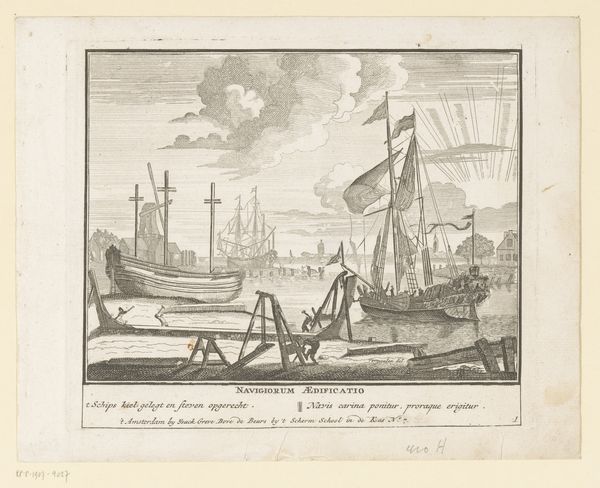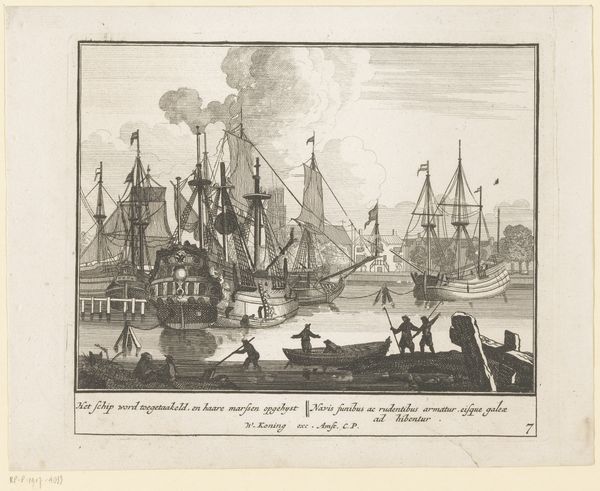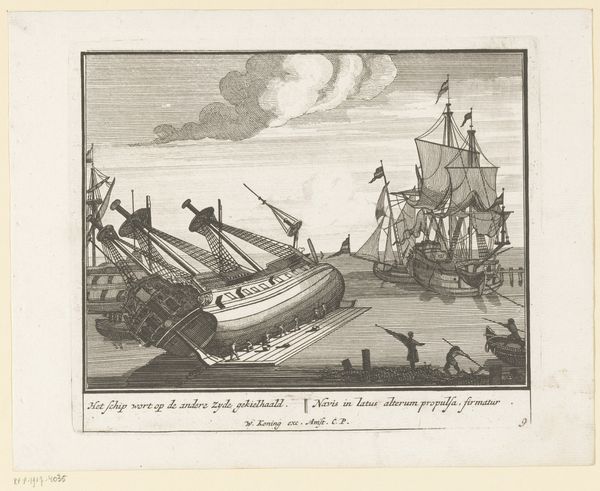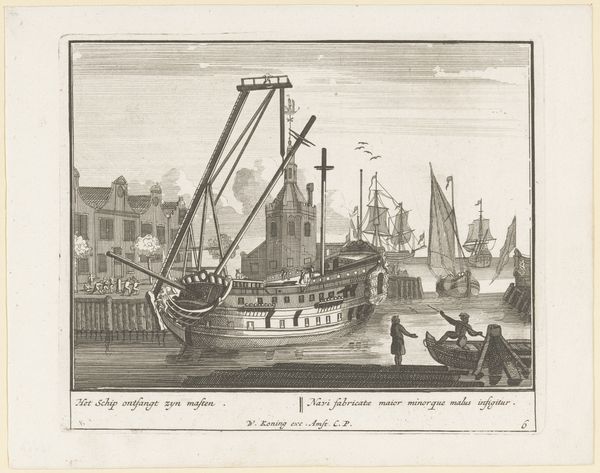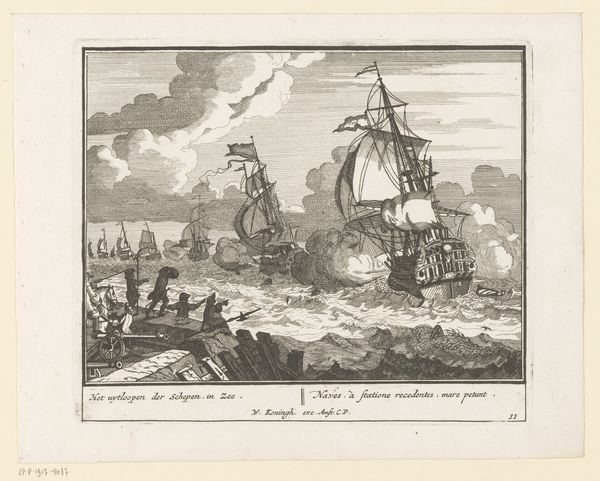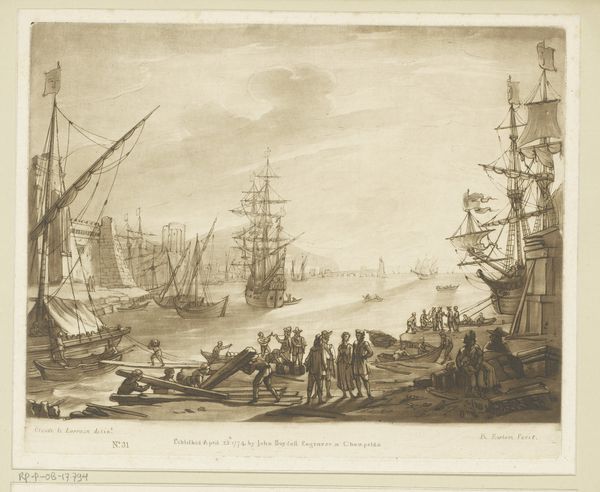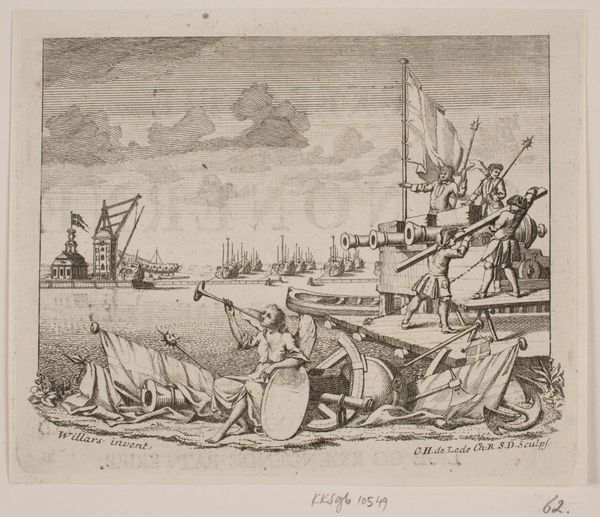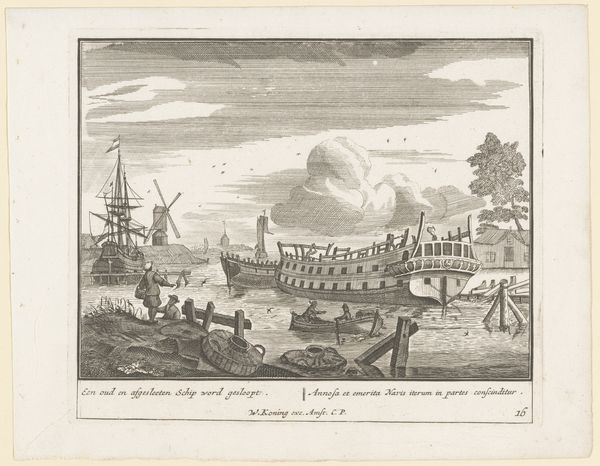
Schip wordt gekeerd om de bodem te breeuwen en harpuizen 1717 - 1732
0:00
0:00
pietervandenberge
Rijksmuseum
print, engraving
#
dutch-golden-age
# print
#
cityscape
#
genre-painting
#
engraving
Dimensions: height 166 mm, width 199 mm
Copyright: Rijks Museum: Open Domain
Curator: What a find. This engraving, made sometime between 1717 and 1732, showcases a typical harbor scene during the Dutch Golden Age. Pieter van den Berge truly captured the everyday hustle. It's titled "Schip wordt gekeerd om de bodem te breeuwen en harpuizen," housed here at the Rijksmuseum. Editor: It has a wonderful sense of layered activity, with tilted ships dominating the foreground. You can feel the controlled chaos, yet the print is calm, organized, and feels rather static. Do we know what the purpose of the work might have been? Curator: Indeed. Translated, the title gives a detailed overview. It refers to the practice of careening ships, tipping them on their sides, to caulk or tar the hulls. Look closely and you can make out groups of people doing exactly that. Editor: The act of maintenance becomes the main subject here. Was it intended to document the ship-building or shipping industry for its investors and participants? I wonder how widespread engravings such as this were—and who their intended audience was. It gives insight into maritime trade, which had its dangers and triumphs in that period. Curator: Exactly. It could have served as a commemorative or simply informative piece. Engravings were an effective and fairly widespread method of conveying information at the time, playing an integral role in maritime culture. In our time, the ship tilting can suggest vulnerability, but for them it was essential practice for survival, control over nature, and ensuring dominance. Editor: So even ordinary images carry a wealth of contextual weight. I’ll be pondering the layers of information—literal and figurative—encoded within this seemingly simple harbor view. Curator: And I’ll keep digging for further clues about Van den Berge's maritime contributions and how they shape our perception of Dutch maritime history.
Comments
No comments
Be the first to comment and join the conversation on the ultimate creative platform.
